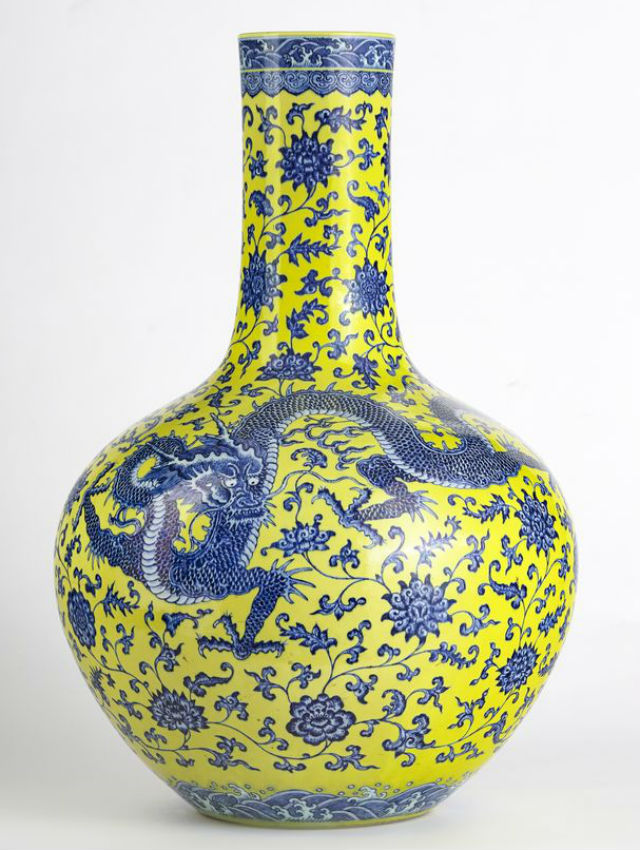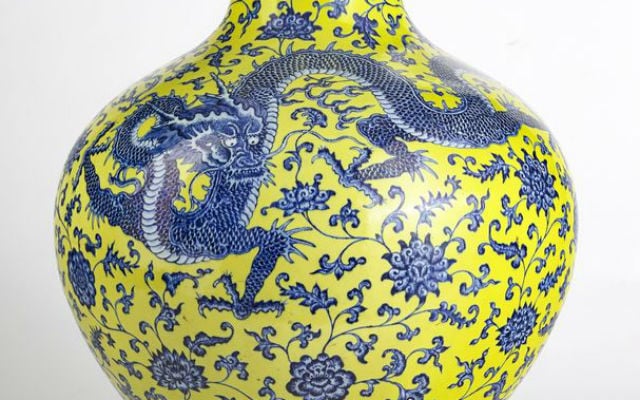The yellow and blue vase fetched a record price at auction on September 21st in Geneva as part of auction house Genève Enchères' Asian art sale.
“After a lengthy battle between a collector over the phone and a buyer in the room, the lot has finally been won by the buyer present in the room for five million Swiss francs, an amount never reached in Geneva for a work of art (except watches and jewellery),” said Geneva auction house Genève Enchères in a press release.
The vase, 60cm high, depicts two dragons against a yellow background. It bears a Qianlong six character sealmark, a signature of 18th century Qing dynasty porcelain.
The Qianlong sealmark. Photo: Genève Enchères.
“This is the hammer price so with the commission added it is a total of 6.08 million Swiss francs (€5.1 million/$6.1 million),” auctioneer Olivier Fichot told AFP.
The final price was 10,000 times more than the catalogue estimate. The vase had originally been estimated to be worth between 500 and 800 Swiss francs (€430-690/$515-825), according to Swiss news portal 20min.ch.
The buyer, an amateur from Asia, was in the room for the auction, while his competitor bid by telephone, according to AFP.
The vase, article 567 in the auction house's Asian sale, sold for nearly 100 times more than any other piece in the same auction.
The auction house's previous record was a bronze Buddha statue that sold for 550,000 Swiss francs (€475,241/$566,387).

READ MORE: Online auctions: 10 tips to avoid being ripped off



 Please whitelist us to continue reading.
Please whitelist us to continue reading.